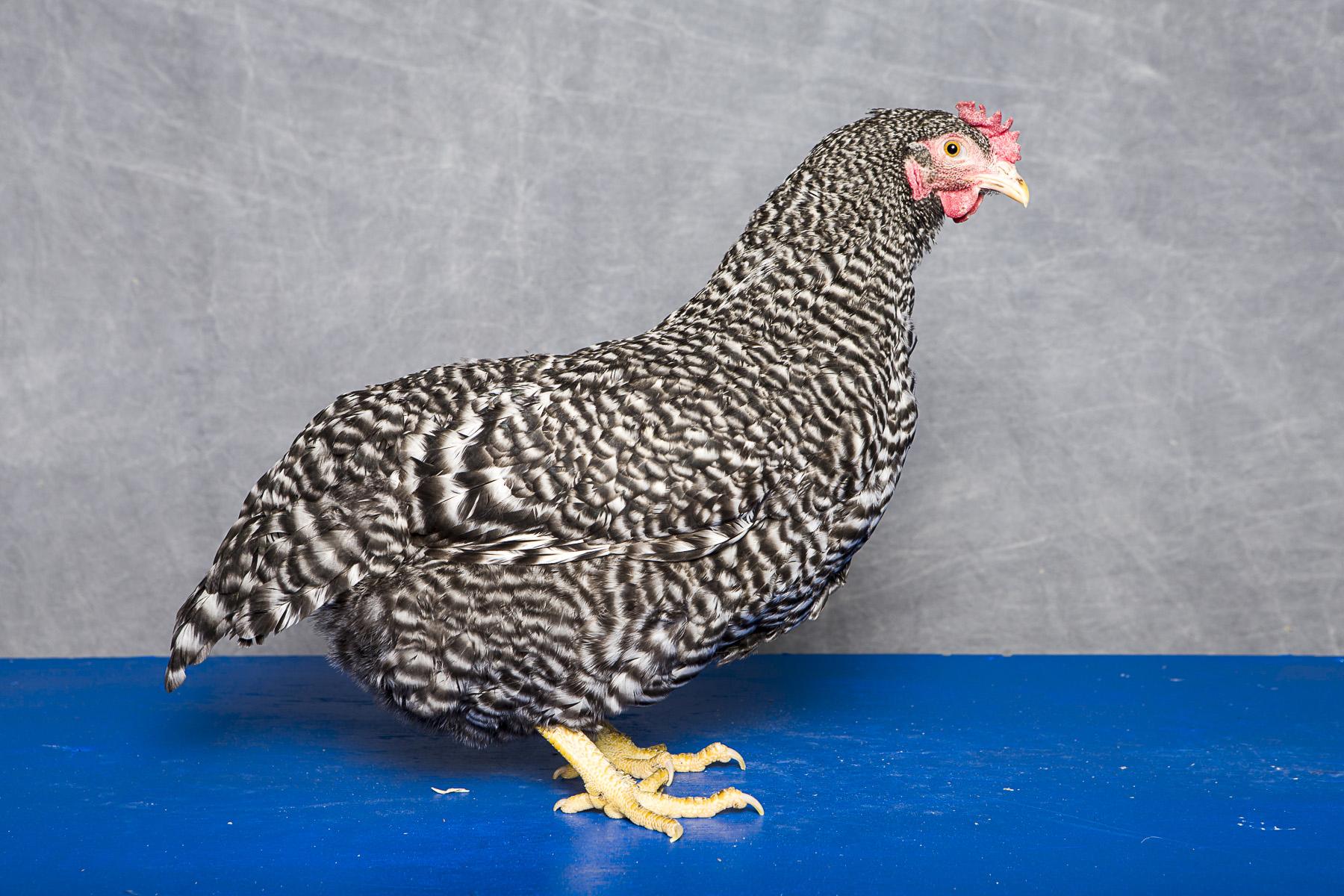Poultry: Sex-Linked Crosses
Sex-Linked Crosses
In order to understand how sex-linked crosses work, an understanding of avian genetics is required. The first thing to note is that the genetic basis for sex determination is different from that for mammals, as shown below.
MAMMALS(e.g., humans, cows, etc.) Male = XY Female = XX Males determine the sex of the offspring |
 |
BIRDS(Including poultry) Male = ZZ Female = ZW Females determine the sex of the offspring |
Specific breeds or strains of chickens can be developed where it is possible to tell male and females apart at hatch based on their physical appearance, often plumage color. For the matings to work the physical characteristic must be carried on one of the sex chromosome - thus the term ‘sex-linked’- and the correct male and female breeds should be selected. For example, a Delaware female mated to a New Hampshire or Rhode Island Red male is a sex-link cross where the males will have the Delaware feather pattern of their mother and females will have a solid red feather pattern similar to their father. If, however, you mate a Delaware male with a New Hampshire or Rhode Island Red female, all the offspring will have the same Delaware feather pattern.
It is important to remember that the offspring are hybrids and will not breed true.
Examples of sex-linked crosses for egg production
The black sex-link (also known as Rock Reds) is produced by crossing a barred hen with a non-barred rooster. The male offspring are feathered barred like their mother and the female offspring are a solid color, typically black. The black sex-links are produced by crossing the Barred Plymouth Rock hen with a Rhode Island Red or New Hampshire rooster. At hatch both sexes have black down, but the males can be identified by the white dot on their heads. As previously indicated, males feather out with the Barred Rock pattern along with a few red feathers, while females feather out solid black with some red in the neck feathers.
|
Barred Plymouth Rock Female
|
|
X |
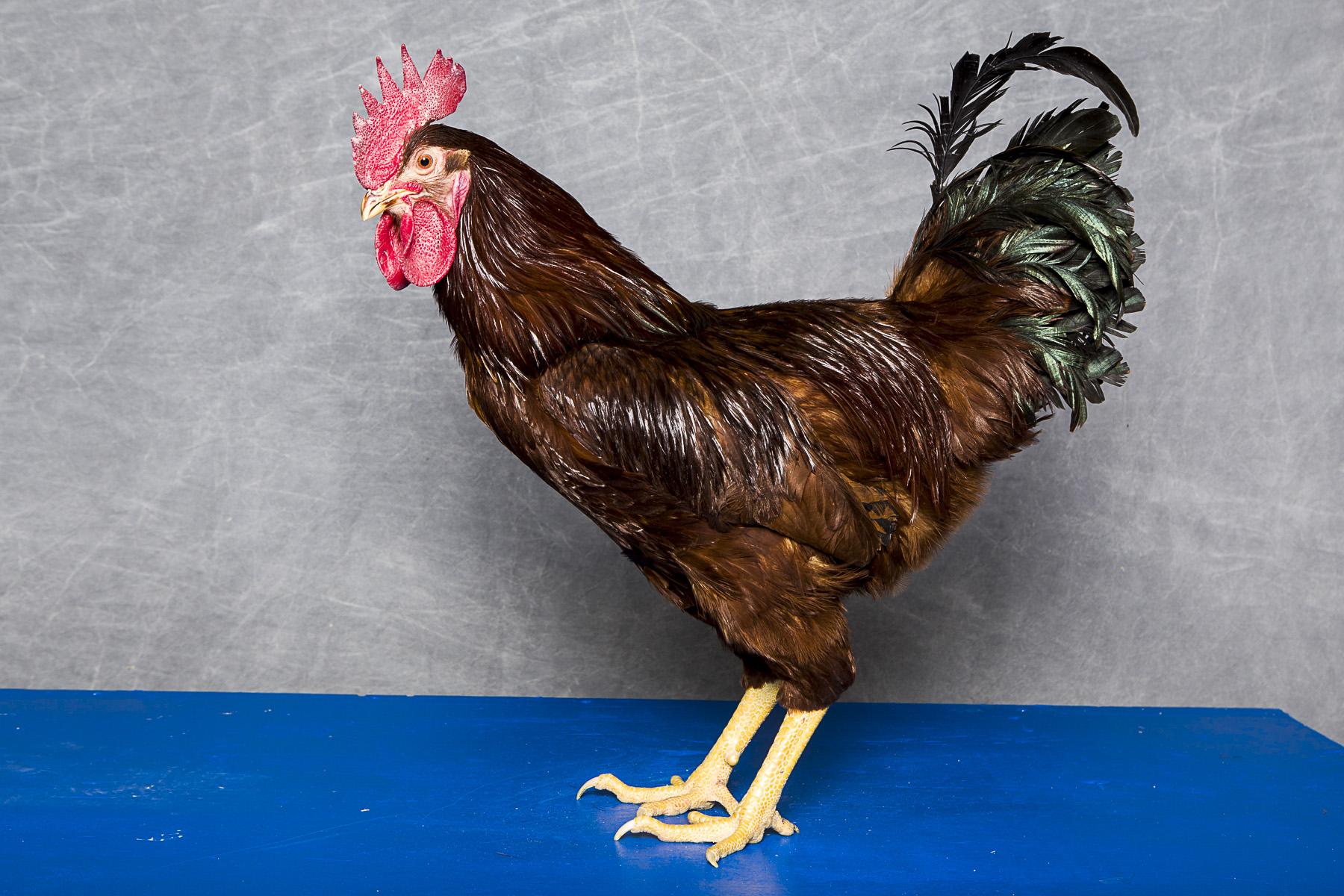 Rhode Island Red Male |
|||
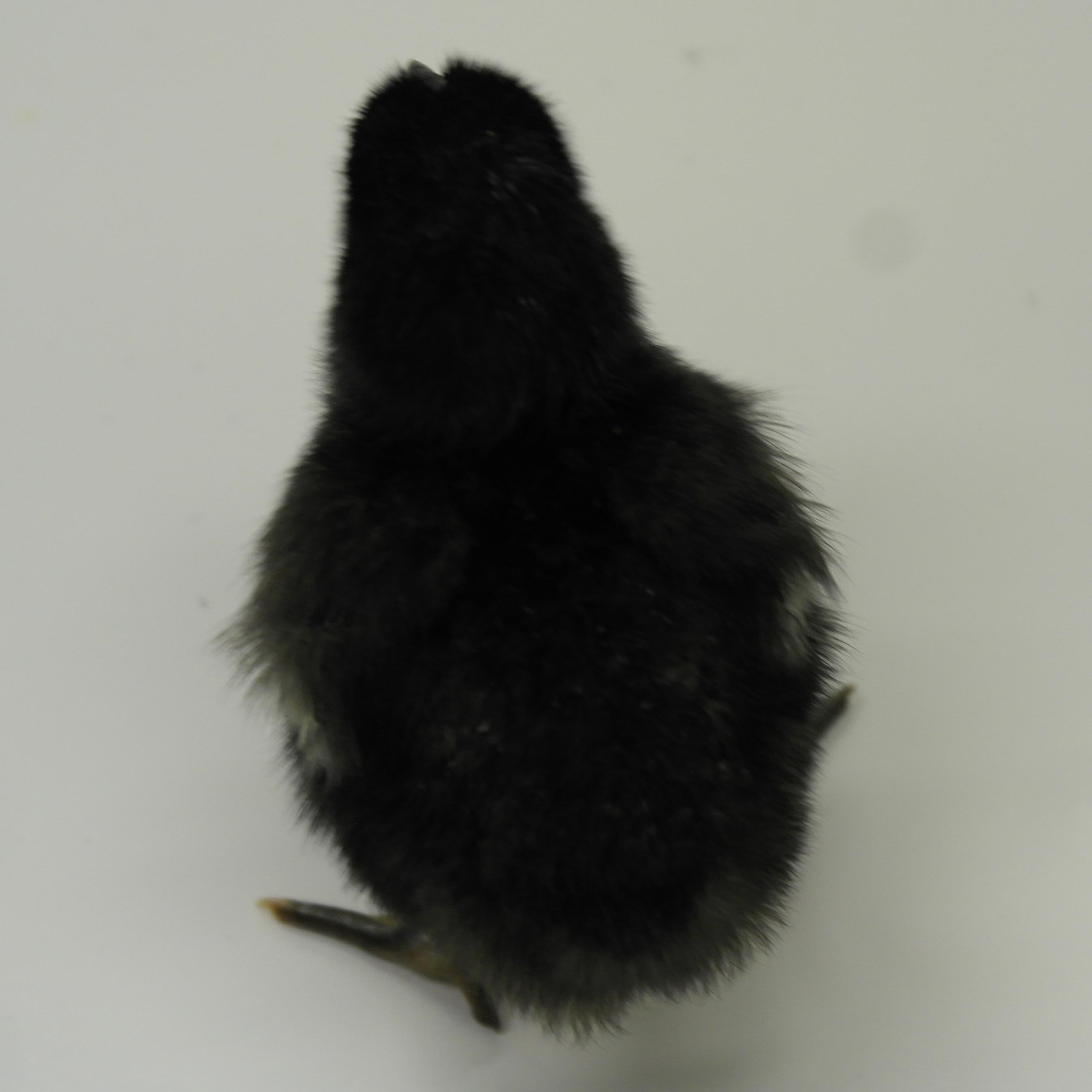 Day-old female |
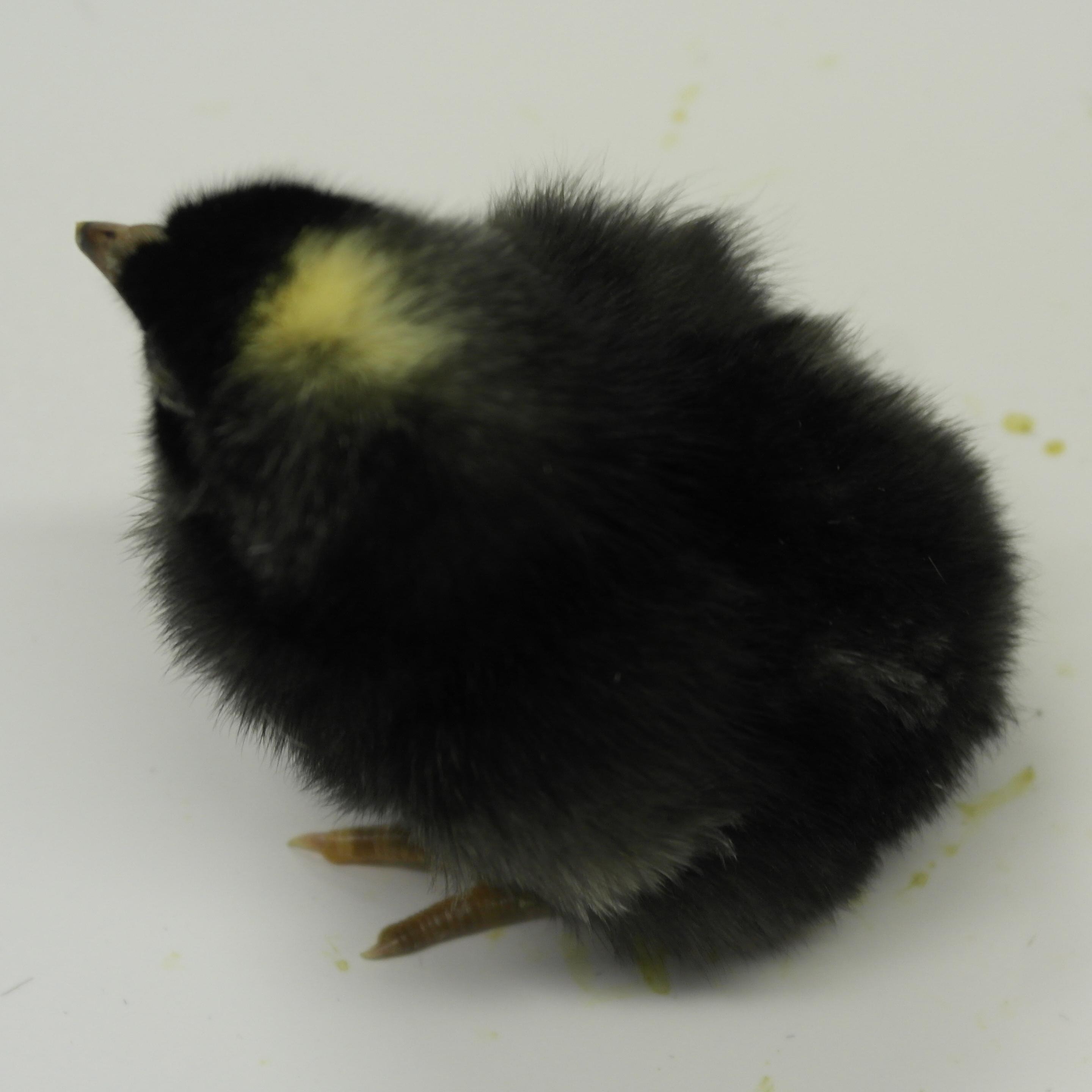 Day-old male |
The red sex-link (also known as Golden Comet, Gold Star, or Cinnamon Queen depending on the specific cross used) are produced by a number of different crosses. White Plymouth Rocks hens with the silver factor are crossed with a New Hampshire male to produce the Gold Comet. A Silver Laced Wyandotte hen is crossed with a New Hampshire rooster to produce the Cinnamon Queen. Additional possible red sex-link cross combinations are the Rhode Island White hen and a Rhode Island Red rooster or a Delaware hen with a Rhode Island Red rooster. Males hatch out white and can feather out to pure white or with some black feathering depending on the cross. Females hatch out buff or red, depending on the cross, and they feather out buff or red.
Examples of sex-linked crosses for broilers
A sex-link trait that has been used in sexing day-old broiler chicks is the speed of feather growth. Slow feathering in chickens is caused by a dominant gene (referred to as K) on the Z chromosome (remembering that males are ZZ and females are ZW). The difference in the length of the primary and covert wing feathers can be seen between one to three days from hatching. After this age it is not possible to use this sex-link cross for sexing chickens.
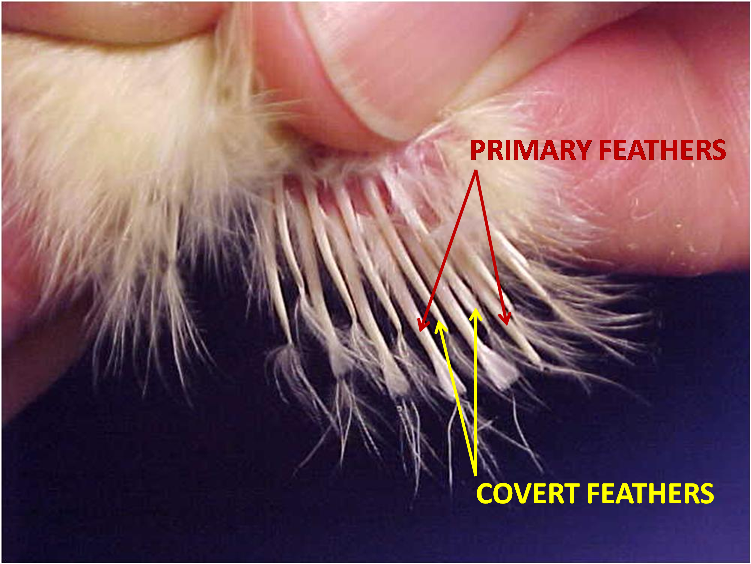

Slow-feathering female chickens have a single copy of the dominant form on their one Z gene (indicated as K_). Fast-feathering male chickens have two copies of the recessive form of the gene (indicated as kk).
The sex-linked cross involves mating a male with two recessive k genes (i.e., kk) with a female that has the dominant form of the gene (indicated as K_).
Offspring from this cross will be fast-feathering females like their father and slow-feathering males like their mother, as shown below.

